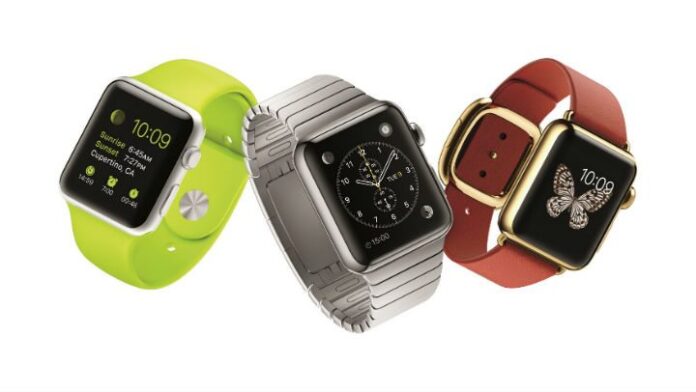Editor’s Note: Welcome to Analyst Angle. We’ve collected a group of the industry’s leading analysts to give their outlook on the hot topics in the wireless industry.
Pardon the pun in the title, but I could not resist. By now — unless you have been living under a rock without Internet access — you will know all about Apple’s new must-have consumer wearable: the Apple Watch. Zillions of news stories have talked about the features, the sapphire crystal screen, the multiple sizes and styles available, and the new processor. But one thing I have not seen discussed is the timing on availability. Why the delay?
When the iPad was launched in 2010, it was formally introduced on Jan. 27, and then went on sale six weeks later on March 12. The iPhone was a longer introduction, as it was initially announced Jan. 9, 2007, and went on sale on June 29, 2007, at 6 p.m. I was one of those who queued up for a couple of hours in 100-degree heat to spend $599 for an 8 GB model with subsidy.
The Apple Watch was announced last week, but will not go on sale until “early 2015.” Apple has not been more specific than this. So in this respect, the schedule for introducing the Watch is more like the original iPhone than the iPad. Why the difference? Why the delay?
The iPhone introduced a whole new operating system and software environment for Apple, whereas the iPad simply used the same iOS, but with a bigger screen. Hence the iPhone needed new apps designed and developed for it, while the iPad could use the same iPhone apps (although they did not look that great). Developers scrambled to get their apps converted from the small iPhone screen to the larger iPad and then started developing iPad-specific apps. The Watch uses a new user interface and (obviously) screen size; simply taking an existing iPhone app and shrinking it will not work. Plus, there are additional health- and fitness-oriented capabilities in the Watch that are not available in the iPhone. Hence, it appears Apple wants to give developers sufficient time to get creative with the Watch and come up with completely new apps and services in time for the launch.
Implied in this approach is that apps are now really important to the success of any mobile device. Just ask BlackBerry what happens when you do not have a sufficiently large library of apps or strong developer support. Without very strong app developer support (and some really creative apps), the Apple Watch looks like an expensive smart watch that is little different from many of the other designs. The quality may be there in the construction and design, but it is the apps that will drive the utility and ultimately the sales.
There also appear to be some issues with the screen manufacture that are causing delays. Again, this is a new form factor and construction method for Apple (not the force-sensitive screen), and the different sizes and designs will likely cause some production issues. In short, it appears that Apple is not quite ready for mass production and sale of the Watch. Hence the “early 2015” availability.
Which begs the question: If the Watch is not ready for prime time and there are no compelling apps (yet), why not wait to announce it later in the year or even in January? After all, Apple could have recruited a number of developers to create new apps in secret and then announce the Watch four to six weeks before availability. As it is, the announcement was in early September with availability planned for some time after four months.
I think there are two reasons for the unusual (for Apple) launch schedule. First, Apple wants as many developers as possible and realized it would be impossible to keep everyone under embargo. So give the world plenty of time to develop lots of new stuff for the Watch.
Second, perhaps knowing they would not be able start commercial sales in time for the all-important holiday season, Apple chose to announce the Watch early and basically tell consumers, “Hey, this cool new Apple Watch is coming just after the holidays, so save your money and wait. Don’t buy a Samsung Gear, Moto 360, Pebble Steel, etc.” What is telling here is that Apple must actually be worried about the competition; after all, Pebble has been relatively successful and gets quite a bit of press. The concern at Apple must have been that if consumers spent their smart watch dollars this holiday season, there would be fewer dollars left for the first quarter introduction of the Watch.
So Apple’s strategy appears to be to tell everyone now what is coming, build the anticipation, give the developers time to work their magic and make sure consumers have some spending power left after the holidays to actually buy an Apple Watch. How successful this will be, only time will tell. Again, pardon the pun.
Iain Gillott, the founder and president of iGR, is an acknowledged wireless and mobile industry authority and an accomplished presenter. Gillott has been involved in the wireless industry, as both a vendor and analyst, for more than 20 years. IGR was founded in 2000 as iGillottResearch in order to provide in-depth market analysis and data focused exclusively on the wireless and mobile industry. Before founding iGR, Gillott was a Group VP in IDC’s telecommunications practice, managing IDC’s worldwide research on wireless and mobile communications and Internet access, telecom brands, residential and small business telecommunications and telecom billing services. Prior to joining IDC, Gillott was in various technical roles and a proposal manager at EDS (now Hewlett-Packard), responsible for preparing new business proposals to wireless and mobile operators.


